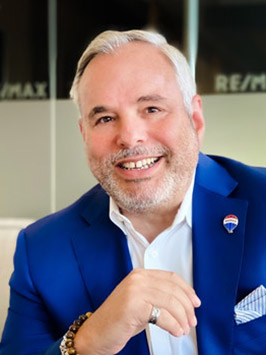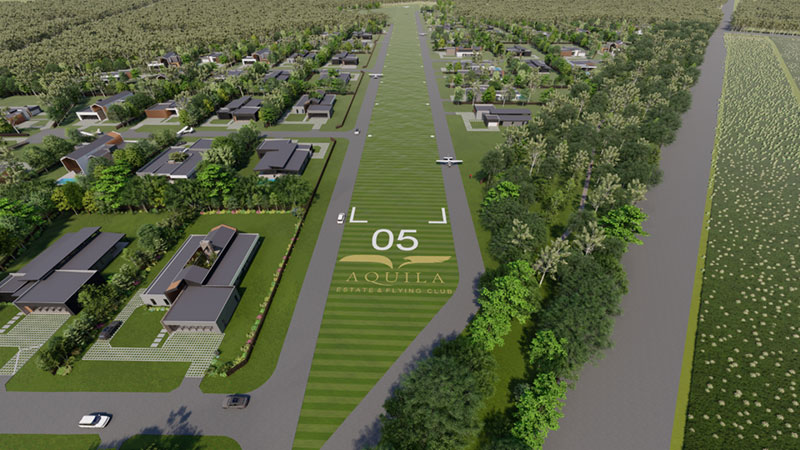New horizons for airpark developments
Many investments promise sky-high returns but no other real estate investment can do so with quite the same degree of literal authenticity as a housing estate for recreational pilots.
A housing estate for recreational pilots may sound like someone’s got their head in the clouds but across Australia residential airparks enjoy a committed community of likeminded residents looking for an investment, lifestyle and a place to park their plane.
From a pool of around 31,000 pilots in Australia owning 16,000 registered aircraft, property developers need only around 60 flight aficionados to buy and fill their unique estates, although plane ownership isn’t a criterion.
Re/Max Regency Queensland estate agent Russell Segal and New South Wales' Rylstone Airpark owner and developer Rob Loneragan say to ensure an airpark property developments’ success you have to be more than just a flying enthusiast.
“It’s very definitely a niche industry - anyone that wants to create an airpark really needs to do their homework,” Mr Loneragan, himself a pilot, small aircraft owner, former importer of seaplanes with experience in property development, said.
Mr Segal is in partnership with experienced pilots to develop and sell the new residential airpark Aquila Estate, and they have long-term careers and qualification in the construction and property development industries too.
The estate is limited to 62 blocks, with a communal clubhouse, manicured grass runway and more than 50 hectares of protected forest. Land sizes range from 2,400 square metres to the grander 4,000 square metre with a starting price of $275,000.
“We initially set out to go and to find a block of land for sale that already had a runway,” Mr Segal said.
“After looking at a few, we came across one outside Hervey Bay that already had a DA (development application) on it but it was just never done right,” Mr Segal said.
“Part of the due diligence, was to answer the question, why don’t they work in Australia because you look at airparks in America and they’re on another stratosphere.”
Four hurdles
Mr Segal said four key issues became apparent.
“The first was they were always conceived by an enthusiast who had no idea about design, construction or build and there was no thought process into the end product, and into money.

Russell Segal, Sales Associate, ReMax Regency Robina
“The second thing was that most of them were bolted onto major airfields and the novice and the recreational pilot was intimidated by flying in that big airspace.
“The third issue that came up was that you buy on these airfields, and there’s 60 lots and you come down in 10 years and nobody’s built anything.
“Fourth, you were getting enthusiasts that were putting up a Colorbond shed, living in the shed, ‘hangaring’ the plane in there, using it as a man’s thing, and then somebody next door puts up a million-dollar home and nobody could protect your value.”
Rylstone Airpark near Mudgee in New South Wales is a 63-lot community made up of 37 small, medium and large hangar-only lots and 26 residential lots.
Since the airpark hit the market in 2015, more than 65 per cent of the park has been sold.
“When I decided to create the airpark at Rylstone, I needed to think about where the buyers would come from, so I created an airpark where you actually can buy a parcel of land, freehold title, on the airpark. It’s an investment. You own it,” Mr Loneragan said.
“You don’t have to pay somebody rent and no one’s going to kick you off it. Once you own it, it’s yours and it’s an investment.
“There are very few people that have bought at my airpark, that come from anywhere other than Sydney.
“There are few that have come from Port Macquarie, and one’s come from Albury, but the vast majority of them all come from Sydney.
“The general scenario is, if you’re a parent who’s been interested in aviation, and you and your partner have had three or four kids, you’ve educated them, and they’ve grown up and they’re out living their life now, those people have tended to downsize into a smaller property in Sydney.
“Yet they still want to pursue their aviation interest and aren’t really interested in keeping an aeroplane at Bankstown because of the cost or the time involved in driving to it, and when they learned about my airpark, and they’d come out and have a look and they’d go, ‘wow, this is a beautiful slice of country’, with gorgeous sunrises and sunsets and a little unspoilt country town like Rylstone and Mudgee’s just up the road.
“So, they buy a block of land here and they develop their aircraft accommodation and some residential accommodation and they’ve got their foot in both camps here, they’ve got their city life and their country life.”
Cheaper than suburbia
Both estates offer turnkey builds and in Aquila’s case, an architect to design homes included in the price.
“The minute you settle on the lot, you’ve got a three-year timeframe in which you have to build,” Mr Segal said.
“That way, in a five-year period for example, I know the whole estate’s built out and you know, if you’ve invested in it, your investment is secure.
“If I can’t control the build, I can’t guarantee anyone’s investment.
“When you walk into an estate and everything’s occupied and everything looks ‘schmick’, all of a sudden there’s a value.
“When you design the house, you have to include a hangar in the design, but you don’t have to build the hangar, so if ever you on sell your lot, there’s already an approval for that.
“We’re only anticipating a 40 per cent aircraft ownership, so the reality is you can buy a block of land for $275,000 and you can build a house on it for $400,000, and under $700,000 you’ve got a beautiful home sitting outside Hervey Bay on a 2,400 square metre lot and you can go and retire there or put up an Airbnb, or do whatever you want to do, and it’s still cheaper than buying a house down in suburbia.”
Lifestyle and the freedom to enjoy it make location a basis of success.

Aquila Estate and Flying Club is a gated community a 15-minute drive from Maryborough and less than 35 minutes to Hervey Bay. It features a coastal forest estate while being close to the Sunshine Coast.
Rylstone Airpark is three hours’ drive from Sydney, four minutes from the township of Rylstone, 40-minute drive or 15-minute flight to some of the country’s best wineries and two 900-metre manicured grass runways.
“It’s been an interesting and very rewarding development, to see so many enthusiastic people come and want to buy, and want to build and create a something here and make it a part of their life,” Mr Loneragan said.
“People think airparks are noisy or that you’ve got to be an aviator - all you’ve got to be is likeminded,” Mr Segal said.
“If someone’s going to drive past your house, you can’t complain about the noise.”
Aquila will be for daytime flying only so there would be no aircraft noise at night.



















